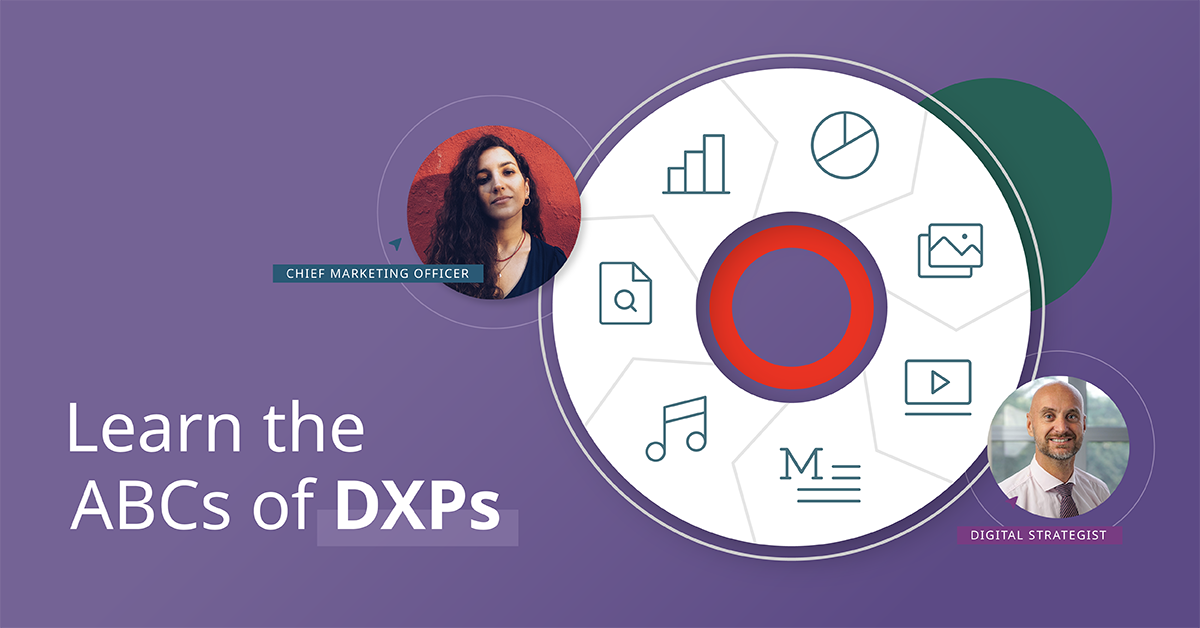Digital experience platforms (DXPs) are a relatively new arrival in the alphabet soup of martech offerings. But the genesis of these solutions comes on the back of technology that’s been around since the outset of the digital era: the content management system (CMS).
In the internet’s early days, content was typically published to web pages through HTML files and other labor-intensive front-end delivery mechanisms. To publish content or update their shiny new digital experiences, editors and content producers had to rely on the coding skills of their developer partners.
Cue the evolution of the CMS — a behind-the-scenes content-publishing interface that enabled content producers to deliver their online content streams.
Yet, those early monolithic CMSs have since given way to platforms that far surpass the traditional notion of a place to create, manage, and publish content.
Today, a CMS rests at the heart of everything digital publishers need to orchestrate their content journeys. It also empowers critical marketing functions, such as:
- Layering in personalization and segmentation for different audiences
- Monetizing and activating advertising campaigns
- A/B testing headlines and messaging to optimize engagement and impact.
But a modern CMS can do so much more. It has become a platform for managing entire digital experiences.
CMS, meet DXP
What’s the difference between a content management system and a digital experience platform?
As part of an expanding set of digital capabilities, analyst groups (including Gartner and Forrester) coined the term DXP to characterize software technologies that aggregate all the necessary capabilities for building and delivering digital experiences. These “digital experiences” refer to the overall interactions and engagements users have with a brand or organization across digital platforms.
A CMS is one piece of that puzzle. But so are customer-data platforms, personalization tools, digital asset managers, AI integrations, and other martech solutions.
There are thousands of CMS offerings, each designed to fit various communication use cases and needs. Likewise, a DXP offers the essential building blocks for delivering exceptional digital experiences to your audience.
Are there overlaps among these technologies? Of course. But you need to know that best-in-class CMSs today are DXPs in all but name.
An API-first CMS architecture is needed to support content delivery to any device or channel. An API-first approach exposes CMS functionality and content through well-defined APIs, which are independent of the CMS’s user interface. These APIs allow developers to access, manipulate, and deliver content programmatically — and in turn, support the front-end theming where users can consume and interact with that content.
A modern, flexible CMS should also support the integration of the countless third-party plugins typically required to service a fully functioning digital experience. If it’s got an API, then your CMS should be able to integrate with and utilize that service.
Some CMSs can give you most, if not all, of the day-to-day integrations you need to run your business. Think analytics, video platforms, social media tools, ad campaign management, and customer relationship management (CRM) systems. Even if specific capabilities are not available right out of the box, it’s a safe bet your CMS can be customized to your organization’s unique content ecosystem.
With all that functionality in place, your content management platform becomes a digital experience platform. There is no need to build and implement bespoke systems or lock yourself into one vendor who controls the keys to their walled-garden version of a DXP.
The latest DXP frontier: Agility
This leads us to the latest (though certainly not the final) chapter in the evolution of content marketing technology: composable DXPs.
A composable DXP offers all the elements of a standard DXP but deconstructs the pieces into modular components that can be layered on — or off — as needed.
What’s the difference? A composable DXP gives development teams and content managers the flexibility to compose their digital experiences based on current needs rather than an accretion of features and code that might become unwieldy over time.
With a composable DXP, you’re not locked into a single, prix fixe platform. Instead, you can go à la carte and work with the precise set of tools that work best for you and your business.
Here, the power of a composable DXP approach shines through. Rather than re-engineering and re-architecting your technological approach each time your business needs change, your systems are built on an extensible framework that can flex and adapt to those changes.
The outcome? Faster speed to market, more efficient use of developers’ and content producers’ time, and more engaging, innovative, and impactful end-user experiences.

About Brightspot
Brightspot is your CMS solution for delivering brilliant, modern digital experiences with a flexible, fast, and secure platform that you can trust to consistently elevate your content approach. An enterprise-grade powerhouse of tools and templates that can be tailored to your specific business needs, for today and beyond. Our robust, ready-to-go library is fully customizable to meet the demands of your business, content contributors, and developers. But we don’t stop there: We offer the flexibility to craft front-end experiences, ensuring content delivery exactly as you need it. For more information on how Brightspot is the right CMS platform for your company, visit our website here.
